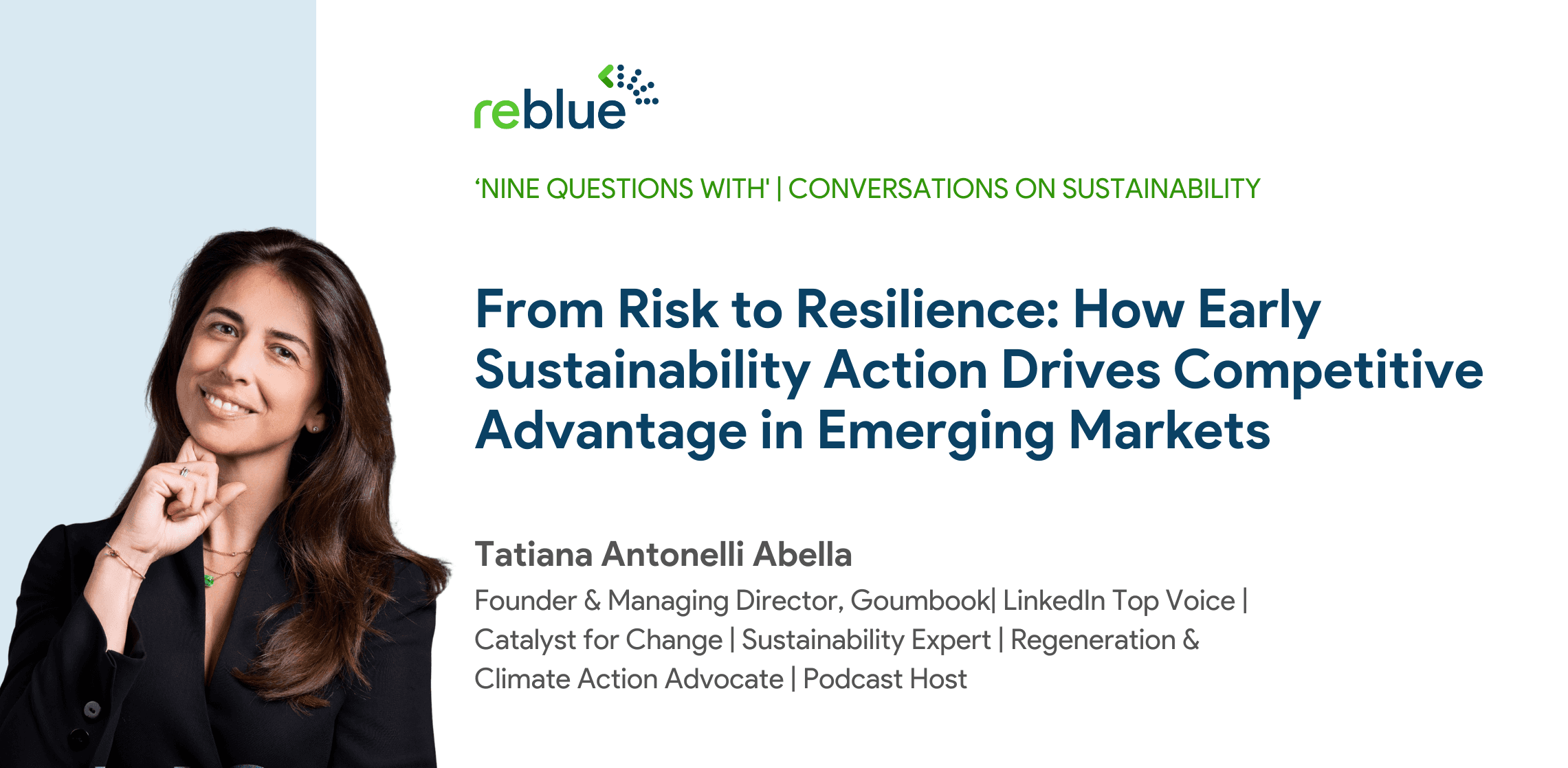Back to Blog
Share Post:


Employee engagement in sustainability is vital for driving innovation, improving productivity, enhancing brand reputation, reducing costs, and contributing to positive social and environmental change.
How often does it happen that someone asks an employee what's one thing you like the most about your company and their answer is regarding sustainability?
Not very often right?
Let's face it. Employee engagement in sustainability is a challenge that most organizations face today.
Employee engagement is no longer a buzzword; it's the lifeblood of a successful sustainability strategy. When employees feel invested in their company's environmental and social impact, it can lead to groundbreaking innovations, increased productivity, and a stronger brand reputation. So, how can we turn this dream into reality?
Let’s dive into the top five challenges in engaging employees with sustainability and explore how to overcome them with flair.
Key challenges in Sustainability Employee Engagement & their Solutions
1. The Knowledge Gap:
Problem: Many employees are in the dark about sustainability goals and their role in them.
Solution: Make sustainability education fun and engaging. Picture this: workshops that are more like adventures, quizzes with a competitive twist, and even a sustainability Olympics!
Example: Patagonia's "Earth Day Every Day" initiative provides employees with educational resources, workshops, and volunteer opportunities to deepen their understanding of sustainability.
2. Feeling Left Out:
Problem: Employees might feel like they're just passengers on the sustainability train.
Solution: Give them a steering wheel! Empower employees with opportunities to lead initiatives, contribute ideas, and feel like they're making a difference.
Example: Unilever's "Sustainable Living Plan" encourages employees to participate in sustainability projects and initiatives, such as volunteering for community clean-ups or developing innovative sustainable solutions.
3. The "What's In It For Me?" Factor:
Problem: Employees might wonder how sustainability benefits them personally.
Solution: Shine a spotlight on how their efforts positively affect the planet and their personal work environment. Demonstrate that sustainability isn’t just a company initiative but a path to a more fulfilling work life.
Example: Google's "Climate Action" program rewards employees for sustainable practices, such as using public transportation or reducing energy consumption. This creates a sense of personal responsibility and motivates employees to contribute.
4. The Recognition Drought:
Problem: Employees’ sustainability efforts might go unnoticed, leading to disengagement.
Solution: Celebrate every small win, big or small. A little recognition can go a long way in boosting morale and motivation.
Example: Interface, a carpet manufacturer, publicly recognizes employees for their sustainability achievements through awards and company-wide announcements. This fosters a culture of appreciation and encourages others to follow suit.
5. The "Change is Scary" Attitude:
Problem: Introducing new sustainability initiatives can be met with resistance due to fear of change.
Solution: Be transparent about the benefits and address concerns head-on. Show employees how these changes can improve their work life and the company's overall success.
Example: Patagonia's "1% for the Planet" initiative demonstrates the company's commitment to sustainability and encourages employees to get involved. By showcasing the positive impact of these efforts, Patagonia has successfully overcome resistance and fostered a culture of sustainability.
But wait, there's more!
Here are some additional tips to help you navigate the sustainability engagement landscape:
Make it personal: Connect sustainability goals to employees' values and interests.
Lead by example: Show your team that sustainability is a priority for you.
Celebrate successes: Recognize and reward employees for their contributions to sustainability.
Foster a culture of continuous improvement: Encourage employees to think creatively and find new ways to reduce the company's environmental impact.
Use online forums and solutions available to get started: Reblue’s Sustainability Engagement Hub is a platform to get employee buy-in into your sustainability plans.
CONCLUSION:
Let's face it, folks – engaging employees in sustainability isn't always a walk in the park. It's more like a hike up a mountain, complete with unexpected twists and turns. But oh, the view from the top? Absolutely worth it!
Remember, Rome wasn't built in a day, and neither is a sustainability-savvy workforce. It takes time, patience, and maybe a few bumps along the way. But with each step – whether it's a fun workshop, a recognition program, or simply leading by example – you're not just changing your company. You're changing the world, one employee at a time.
So, the next time someone asks your team what they love most about their job, wouldn't it be amazing if "making a difference" topped the list? With these strategies in your toolbox, that dream is within reach.
Now, it's your turn to take the wheel. Which of these ideas resonates with you? How will you spark that sustainability fire in your workplace? Whatever you choose, remember: every small action counts. You've got this!
Let's turn that sustainability dream into a green, thriving reality. After all, the Earth is counting on us – and there's no team better equipped for the job than yours.
Ready, set, sustain!

Employee engagement in sustainability is vital for driving innovation, improving productivity, enhancing brand reputation, reducing costs, and contributing to positive social and environmental change.
How often does it happen that someone asks an employee what's one thing you like the most about your company and their answer is regarding sustainability?
Not very often right?
Let's face it. Employee engagement in sustainability is a challenge that most organizations face today.
Employee engagement is no longer a buzzword; it's the lifeblood of a successful sustainability strategy. When employees feel invested in their company's environmental and social impact, it can lead to groundbreaking innovations, increased productivity, and a stronger brand reputation. So, how can we turn this dream into reality?
Let’s dive into the top five challenges in engaging employees with sustainability and explore how to overcome them with flair.
Key challenges in Sustainability Employee Engagement & their Solutions
1. The Knowledge Gap:
Problem: Many employees are in the dark about sustainability goals and their role in them.
Solution: Make sustainability education fun and engaging. Picture this: workshops that are more like adventures, quizzes with a competitive twist, and even a sustainability Olympics!
Example: Patagonia's "Earth Day Every Day" initiative provides employees with educational resources, workshops, and volunteer opportunities to deepen their understanding of sustainability.
2. Feeling Left Out:
Problem: Employees might feel like they're just passengers on the sustainability train.
Solution: Give them a steering wheel! Empower employees with opportunities to lead initiatives, contribute ideas, and feel like they're making a difference.
Example: Unilever's "Sustainable Living Plan" encourages employees to participate in sustainability projects and initiatives, such as volunteering for community clean-ups or developing innovative sustainable solutions.
3. The "What's In It For Me?" Factor:
Problem: Employees might wonder how sustainability benefits them personally.
Solution: Shine a spotlight on how their efforts positively affect the planet and their personal work environment. Demonstrate that sustainability isn’t just a company initiative but a path to a more fulfilling work life.
Example: Google's "Climate Action" program rewards employees for sustainable practices, such as using public transportation or reducing energy consumption. This creates a sense of personal responsibility and motivates employees to contribute.
4. The Recognition Drought:
Problem: Employees’ sustainability efforts might go unnoticed, leading to disengagement.
Solution: Celebrate every small win, big or small. A little recognition can go a long way in boosting morale and motivation.
Example: Interface, a carpet manufacturer, publicly recognizes employees for their sustainability achievements through awards and company-wide announcements. This fosters a culture of appreciation and encourages others to follow suit.
5. The "Change is Scary" Attitude:
Problem: Introducing new sustainability initiatives can be met with resistance due to fear of change.
Solution: Be transparent about the benefits and address concerns head-on. Show employees how these changes can improve their work life and the company's overall success.
Example: Patagonia's "1% for the Planet" initiative demonstrates the company's commitment to sustainability and encourages employees to get involved. By showcasing the positive impact of these efforts, Patagonia has successfully overcome resistance and fostered a culture of sustainability.
But wait, there's more!
Here are some additional tips to help you navigate the sustainability engagement landscape:
Make it personal: Connect sustainability goals to employees' values and interests.
Lead by example: Show your team that sustainability is a priority for you.
Celebrate successes: Recognize and reward employees for their contributions to sustainability.
Foster a culture of continuous improvement: Encourage employees to think creatively and find new ways to reduce the company's environmental impact.
Use online forums and solutions available to get started: Reblue’s Sustainability Engagement Hub is a platform to get employee buy-in into your sustainability plans.
CONCLUSION:
Let's face it, folks – engaging employees in sustainability isn't always a walk in the park. It's more like a hike up a mountain, complete with unexpected twists and turns. But oh, the view from the top? Absolutely worth it!
Remember, Rome wasn't built in a day, and neither is a sustainability-savvy workforce. It takes time, patience, and maybe a few bumps along the way. But with each step – whether it's a fun workshop, a recognition program, or simply leading by example – you're not just changing your company. You're changing the world, one employee at a time.
So, the next time someone asks your team what they love most about their job, wouldn't it be amazing if "making a difference" topped the list? With these strategies in your toolbox, that dream is within reach.
Now, it's your turn to take the wheel. Which of these ideas resonates with you? How will you spark that sustainability fire in your workplace? Whatever you choose, remember: every small action counts. You've got this!
Let's turn that sustainability dream into a green, thriving reality. After all, the Earth is counting on us – and there's no team better equipped for the job than yours.
Ready, set, sustain!

Sustainability
Sep 2, 2024
Share Post:

Read More
Reblue Ventures
We aim to make sustainability simply smart business. Through research and partnerships, we develop pragmatic solutions that reveal the immense uncaptured value in sustainable operations.
Reblue Ventures
We aim to make sustainability simply smart business. Through research and partnerships, we develop pragmatic solutions that reveal the immense uncaptured value in sustainable operations.
Reblue Ventures
We aim to make sustainability simply smart business. Through research and partnerships, we develop pragmatic solutions that reveal the immense uncaptured value in sustainable operations.





